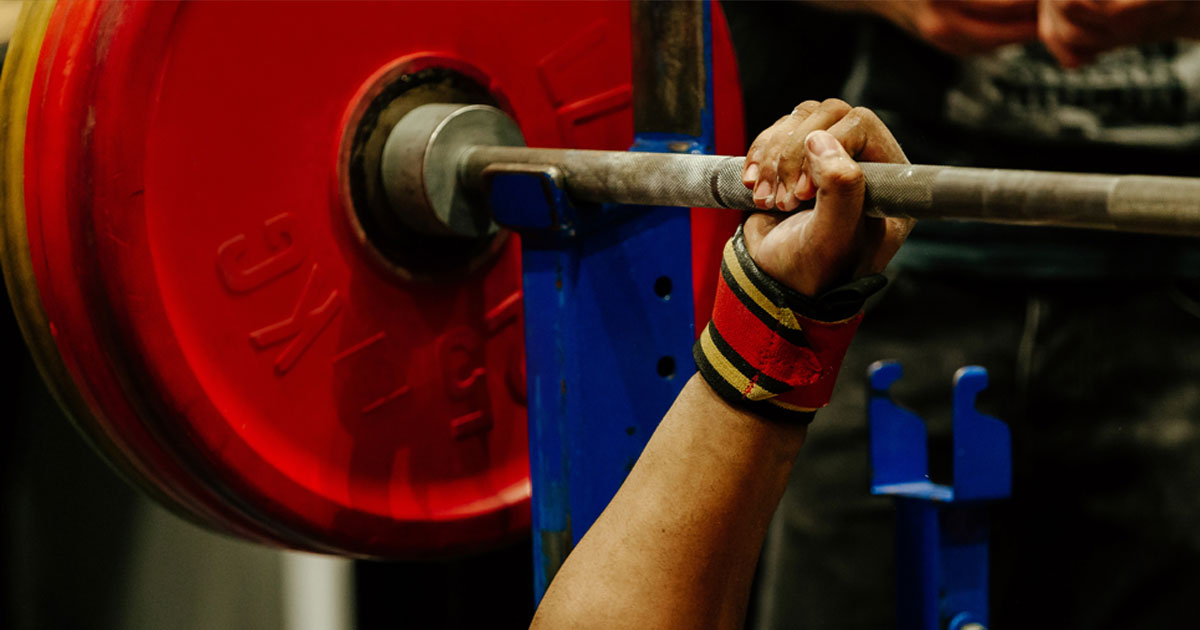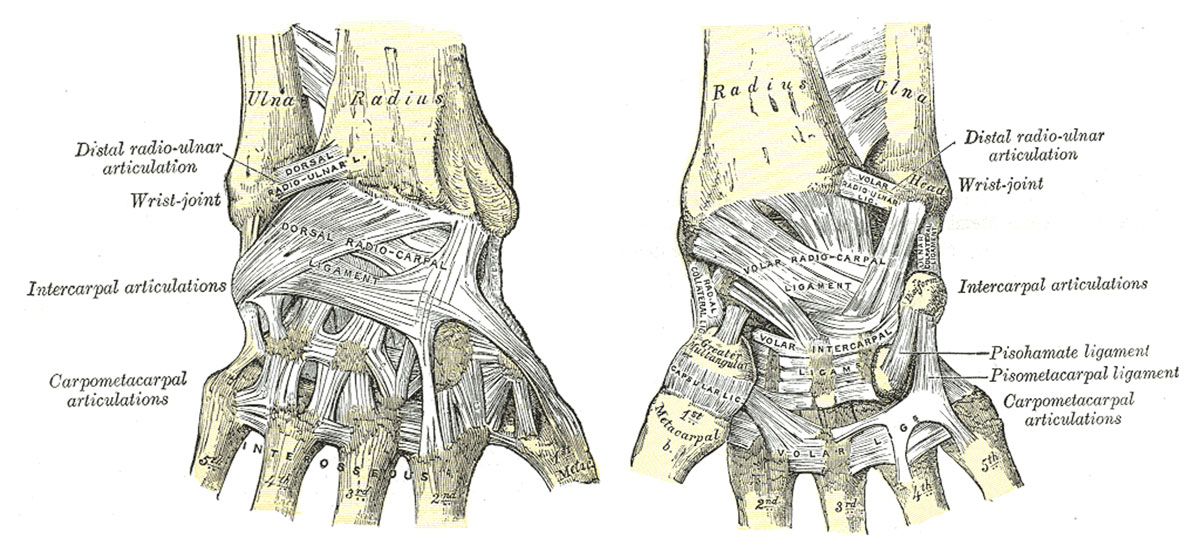
Ulnocarpal Wrist Pain and the TFC
By Mason Neal - Physiotherapist
While pain can manifest at any part of the wrist, pain on the side of the small finger, broadly termed “ulnocarpal pain” can, alongside scapholunate injury, take the longest time to settle – particularly in athletes. This is largely due to the space between the ulna (pinky-sided forearm bone) and carpals (hand bones) being larger than on the thumb side of the wrist, requiring more support by muscles and ligaments when under load. This space, called the “ulnocarpal interval”, doesn’t take as much load as the other side of the wrist when loaded up pushing, pulling, or with impact, but does have more soft tissue to absorb shock and minimise injury, which counter-intuitively adds more structures that can get injured when provoked or put under stress.

The wrist can move in three dimensions – flexing and extending, tilting side to side (deviation), and rotating palm-up (supination) and palm-down (pronation). This dexterity allows movement of the wrist with various sporting movements like swinging a racquet or club, performing handstands or roundoffs, catching and throwing a ball, or grappling when making a tackle. Impact or excess force through the wrist in extremes of these positions can onset ulnocarpal pain that can manifest in a few different ways, including:
- Sharp or aching pain to the area or up the forearm with movement
- Sharp pain with grasping, pushing, or pulling
- Mild swelling to the area
- Clicking or clunking to the area with movement, particularly with wrist twisting
- Pain sleeping and general difficulty getting comfortable
- Difficulty and pain with tasks like pushing up off a chair, using a spoon, or turning a key or doorhandle
- Sensations of “giving way” of the wrist
What is of note is that ulnocarpal pain does not tend to cause tingling in the ring or small fingers or changes in circulation of the fingers. This can be indicative of other conditions like Cubital Tunnel Syndrome or Guyon’s Canal Syndrome, or from repetitive traumas seen in Hand-Arm Vibration Syndrome and requires a different approach to management. What is more unique to the ulnocarpal interval is the structure of the seven ligaments supporting the area known as the Triangular Fibrocartilage Complex (TFC), the tendon sheath of the extensor carpi ulnaris muscle, and the presence of a meniscus homologue to distribute force through the area. The meniscus homologue can be a source of pain with twisting trauma to the wrist, however the ligaments and the tendon sheath are more commonly injured.

Mespreuve et al., 2015. Imaging Findings of the Distal Radio-Ulnar Joint in Trauma. (Journal of the Belgian Society of Radiology)
Ulnocarpal and TFC injury rehabilitation varies slightly, however treatment usually involves some form of support in the early stage for symptom management in the form of supportive strapping or use of a wrist widget-like support, or in more severe cases where symptoms are easily aggravated with movement, a thermoplastic splint may be fabricated and worn for a few weeks alongside low-level exercise to calm symptoms before progressing. Rehabilitation then involves restoring strength and control of the wrist in three dimensions including tilting and rotating, and being able to work the muscles and passive structures to resist forces that would otherwise twist the wrist.

Ulnocarpal and TFC injuries are sometimes referred to therolled ankle of the wrist due to the location on the side of the wrist, propensity of injury to originally from a twist or heavy impact to the area, and need for movement, strength, and co-ordination and dexterity to be incorporated well into the rehab before returning to sport or heavier activities. This is important as, like the ankle, reinjury to the area can occur if return to sport or activity happens too quickly or without adequate rehabilitation, and in some instances lead to persistent wrist pain and sensations of instability.
Imaging is not required for assessment, diagnosis, and commencing treatment with wrist pains, however if imaging has already been performed it is welcome to assist with the process. In many cases a lot of tests for the wrist will be provocative so specific diagnosis of what structure in the area is involved may not be useful, however the initial treatment for injuries within the TFC are similar regardless of which portion is injured.
If you have been experiencing wrist pain, whether general or local to the pinky side and have been having trouble with grasping and performing day-to-day tasks, feel free to contact us or book online for an assessment today.